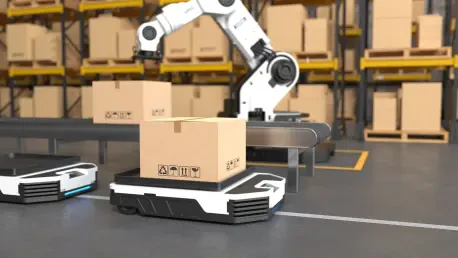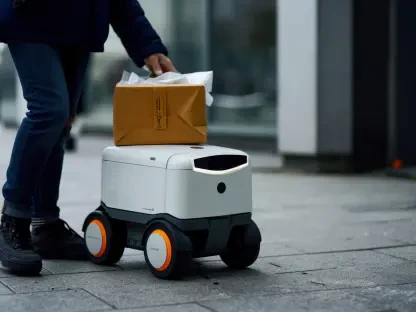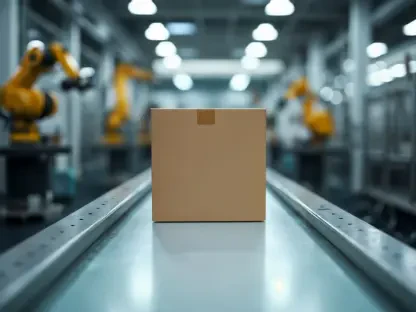Robots in the modern world usually lack the ability to interact with their surroundings in a meaningful way, limited by an absence of sensory feedback. Amazon’s Vulcan robot emerges as a new champion, challenging traditional paradigms with its groundbreaking tactile capabilities. This machine offers a unique evolutionary leap, aiming to transform how robots perceive and respond to touch, a domain often taken for granted.
Crafting a Future Defined by the Sense of Touch
In an era where innovation revolves around enhancing mechanical intelligence, Amazon’s Vulcan represents a revolutionary stride forward. The robot showcases an ability to sense tactile interaction, a feat previously thought to be beyond the scope of robotics. This development suggests a future where technology mimics human touch, inspiring profound shifts in industrial efficiency and workplace safety.
Vulcan’s Role in Robotics Evolution: Looking Beyond Vision
Historically, robots have relied heavily on visual guidance and pre-programmed sequences, resulting in limited interaction capabilities. The absence of sensory feedback often compromises efficiency and poses safety risks, highlighting the need for advancements in robotic intelligence. With Vulcan, Amazon pioneers the integration of sensory technology, aiming to redefine operational dynamics across numerous sectors and set new standards for innovation.
Breaking Down Vulcan’s Distinct Features
Vulcan’s emergence in the robotics landscape is marked by the introduction of ‘end of arm tooling’ technology, a massive step in robot dexterity and interaction precision. Its sensory feedback mechanism, powered by a camera-guided suction cup, enables the robot to ensure precise handling of products within Amazon’s vast catalog. Unlike traditional industrial robots, Vulcan’s tactile capabilities allow it to seamlessly adapt to unexpected contact, demonstrating a level of intelligent response unattainable by past technologies.
Insights from Industry Experts
Aaron Parness from Amazon emphasizes Vulcan’s transformative potential, targeting the inherent limitations of traditional robotics. Research indicates substantial improvements in workforce efficiency and safety, underscoring Vulcan’s role in future workplace dynamics. Industry insiders predict that Vulcan’s capabilities could reshape robotics standards, potentially shifting how sectors adopt and adapt advanced technologies for better productivity and safety.
Touch-Sensitive Technologies Beyond Amazon
The operational strategies employed by Vulcan show promise for enhancing efficiency and reducing physical demands on workers. Its touch-sensitive design opens up possibilities for applications beyond Amazon’s scope, potentially revolutionizing industries through enhanced robotic interaction. Businesses exploring similar advancements can expect boosts in adaptability, efficiency, and safety, creating a ripple effect across multiple sectors.
Amazon’s Vulcan robot signals a pivotal moment in robotics, offering a glimpse into a future where touch defines machine interaction, promising an era of improved safety and efficiency. Moving forward, companies are tasked with assessing Vulcan’s practical applications and exploring broader adoption strategies, a crucial step in elevating industry standards and harnessing the full potential of advanced robotics technologies.









